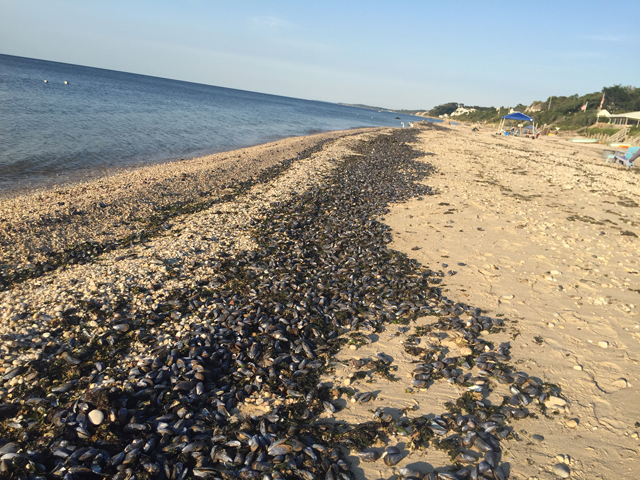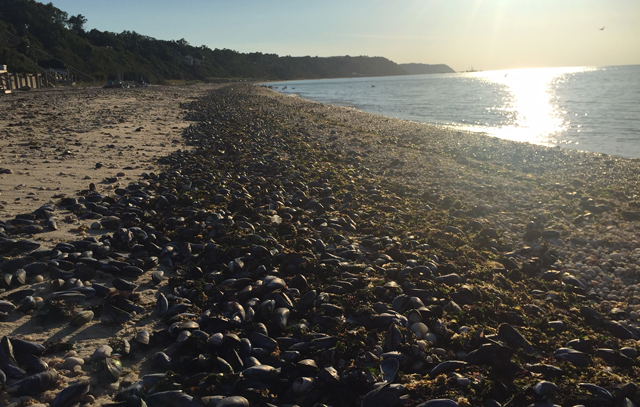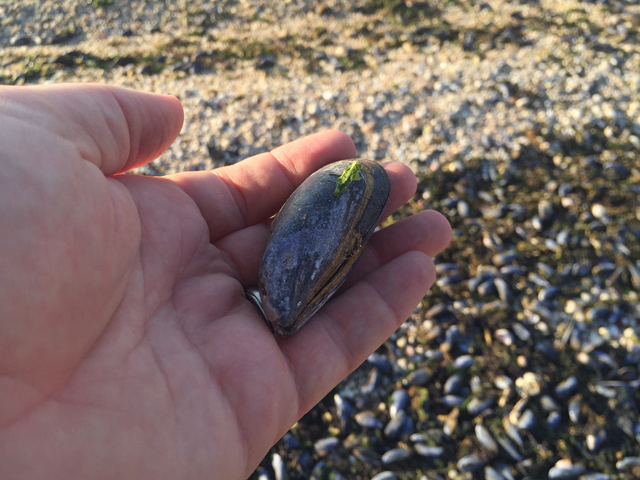Mussels ‘as far as the eye can see’ on L.I. Sound beach in Jamesport


David Gruner has been visiting the same private beach on the Long Island Sound in Jamesport for more than 50 years. On Wednesday afternoon, he witnessed something he’d never seen before.
When Mr. Gruner walked down to the beach he found the shoreline covered in mussels “as far as the eye can see.”
“They’re all about the same size, all clean shells,” he said. “It’s not like anything I’d ever seen growing on the Long Island Sound.”
In an email Wednesday evening, Bren Smith of Thimble Island Ocean Farm in Connecticut, the only mussel farmer on the Long Island Sound, said all his mussels are accounted for. He surmised the likely cause of such an occurrence would be “either extreme heat or a clam dredger ripped up a wild bed.”
“I suspect its the hot flash of water temps,” he said.

Mr. Smith pointed to a 2008 Staten Island Advance article announcing a similar “bizarre shellfish occurrence.” In that article, sources interviewed also blamed either a dredge boat or high temperatures.
Mr. Gruner, a Jamesport resident, estimated there are “hundreds of thousands” of mussels lining the shore between Iron Pier Beach in Jamesport and United Riverhead Terminal in Northville, about a 1.7-mile stretch of beach. He said the mussels were not there when he left the beach Tuesday afternoon, and guessed they’d come in with the high tide later that night.
The smell on Wednesday afternoon, as the shellfish dried in the heat, was worse than in the early evening, Mr. Gruner said. But as of 6:30 p.m. the smell was still pretty strong at the nearby town beach and the surrounding area.
Christopher Gobler, associate dean and researcher with the School of Marine and Atmospheric Sciences at Stony Brook University, said such an incident has two likely causes: high temperatures or rust tide.
He said blue mussels “cannot handle high temperatures” and rust tide is lethal in bivalves.
Laura McMillan of Save the Sound, a Connecticut-based environmental group, indicated she hadn’t heard of the incident when reached by email Wednesday night. While she had no immediate answers for what might have occurred, she reacted to a photo of the mussels by writing, “Wow, that’s quite something.”
Editor’s Note: Check back for more information as we receive it.










